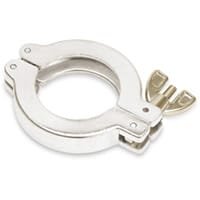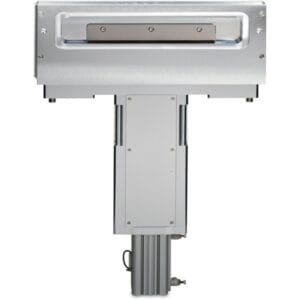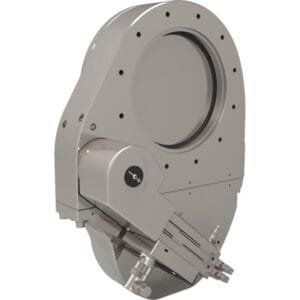KF (QF) HV Cast Clamps (Aluminum)
The KF (QF) HV Cast Clamps (Aluminum) by TFM are precision-engineered components designed to provide secure and leak-tight connections in ISO-KF vacuum systems. Constructed from high-quality aluminum, these cast clamps deliver exceptional strength, corrosion resistance, and long-lasting durability in demanding high vacuum applications. They are perfect for maintaining the integrity of vacuum systems under challenging conditions, ensuring efficient sealing and reliability.
Key Features of KF (QF) HV Cast Clamps (Aluminum)
Aluminum Construction for Strength and Durability: Made from cast aluminum, these clamps offer excellent strength-to-weight ratio, making them ideal for high-performance applications where robustness and reliability are crucial.
Leak-Tight Seals: Designed to provide secure, leak-tight seals for KF (QF) flanges, ensuring the integrity of vacuum systems by preventing contamination and maintaining optimal pressure levels.
Wide Compatibility: These clamps are compatible with a wide range of KF (QF) flange sizes, including KF10, KF16, KF25, KF40, and KF50, making them versatile for various vacuum applications.
Corrosion and Wear Resistance: The aluminum material ensures resistance to corrosion, making these clamps suitable for use in vacuum chambers, semiconductor processing, and other demanding environments.
Efficient Installation: These clamps are designed for quick and easy installation, reducing downtime and ensuring fast setup and maintenance in high vacuum systems.
Applications
The KF (QF) HV Cast Clamps (Aluminum) are ideal for use in high vacuum systems that require robust and reliable sealing, such as:
Vacuum chambers
Semiconductor equipment
Pumping systems
Research laboratories
Analytical instruments
Their durable design makes them particularly useful in environments that experience high mechanical stress, frequent system adjustments, or high temperatures.
Why Choose TFM’s KF (QF) HV Cast Clamps (Aluminum)?
At TFM, we focus on providing premium-quality vacuum components that ensure high performance, reliability, and durability. Our KF (QF) HV Cast Clamps (Aluminum) offer the perfect balance of strength and efficiency, ensuring leak-tight sealing for your vacuum systems. Choose TFM for a secure, efficient, and long-lasting solution to your vacuum sealing needs.





Reviews
There are no reviews yet.